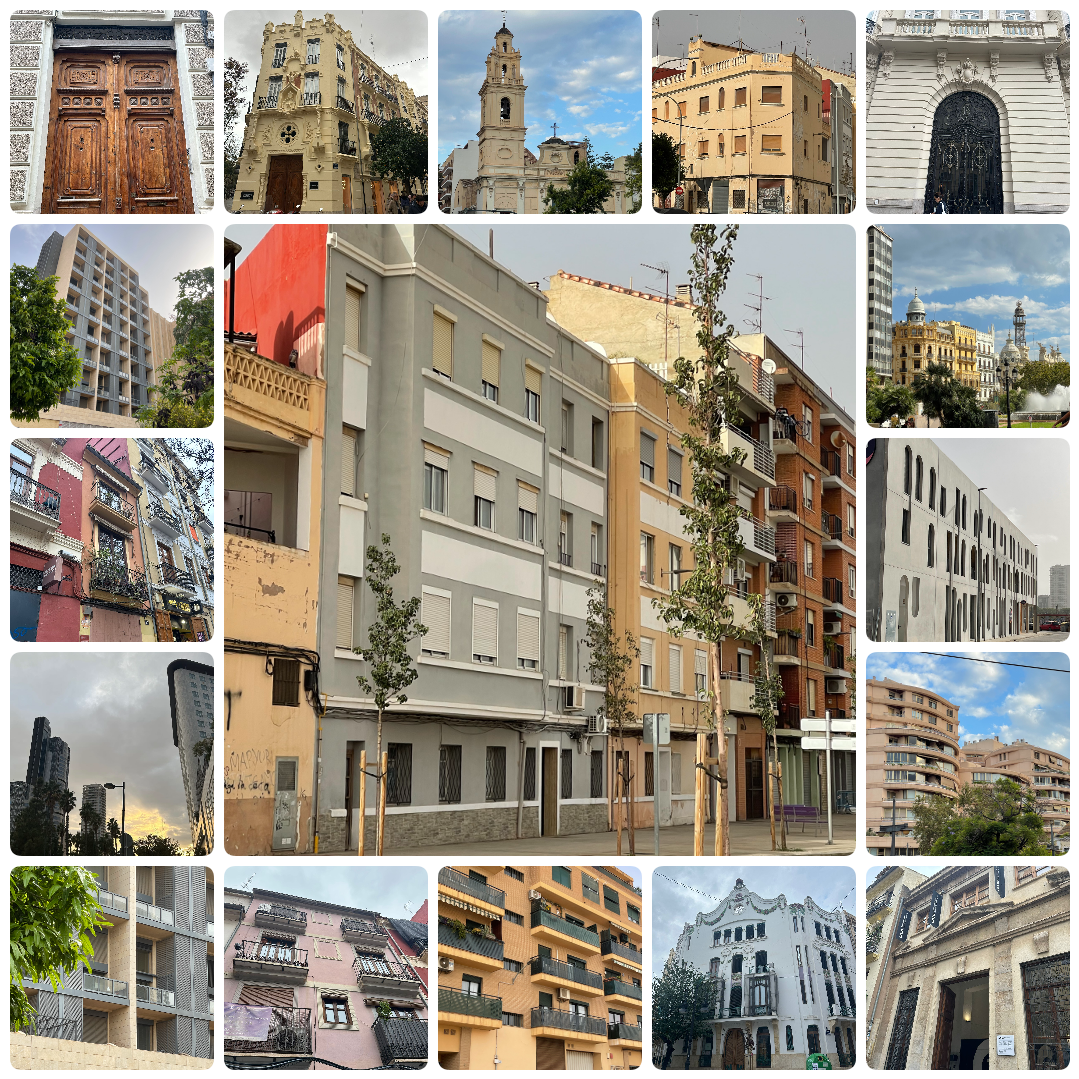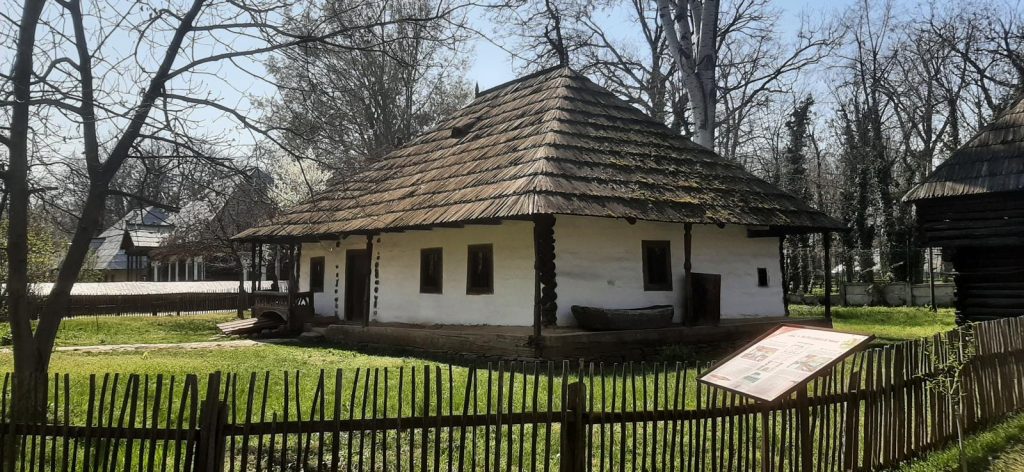

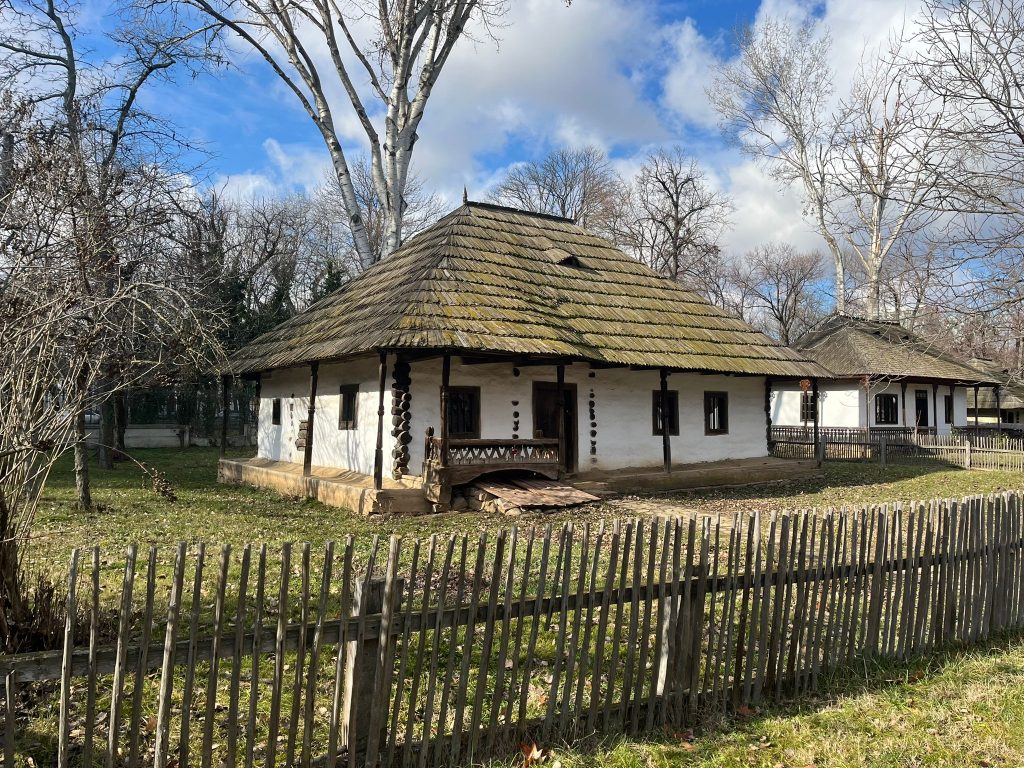
We will take a look at a traditional household from Romania (more specifically from the Neamt region) that is exposed at the Village Museum in Bucharest. The household is composed of the living house and a stable with a hayloft built in console.
Round fir beams were used for the walls, further plastered and painted in white, for both thermal protection and aesthetic purposes. The house is surrounded by an open veranda with carefully finished pillars and has at the entrance a side porch with fretted parapet, asymmetrically placed over the access in the stone cellar. The roof is covered with long shingles in two layers, and its height is another factor contributing to this passive design, facilitating natural ventilation. How? Well, by creating a large space for the hot air to accumulate, since its natural tendency is to rise, and allowing a more efficient vertical air movement, called thermal draft.
Therefore, the materials used in this structure are biodegradable, renewable and can be found locally, which means that repairs were easy to do and did not generate toxic waste, while the carbon footprint associated with transport remained low, since it was carried out over short distances and during the period when these houses were built, means such as carts were used, so fuel or gas were not a problem. Also, they were executed manually, usually by the whole family and in a lot of cases with the help of the community, so there was no need for complex industrial machinery, which reduced emissions associated with construction. Plus, wood is a natural thermal insulator, which can minimize the need for external means of temperature control and the plaster layer can help seal gaps and enhance thermal performance, reducing drafts and energy loss.
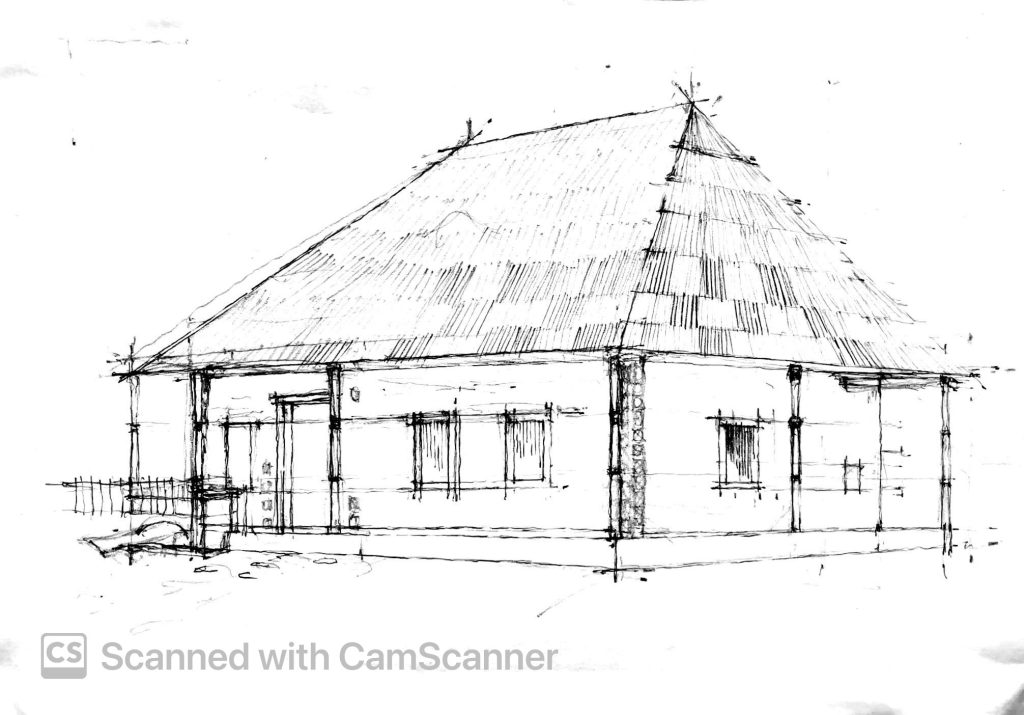

The house has 5 rooms: a foyer, 2 spaces that serve as pantries (a necessary space considering that they had their own products to store), a living room and a clean room. The house inventory reminds of the owners’ occupation: the trap-the interest in hunting, the spear, the toils and the wicker basket-suggets fishing and the vessels and wood tools are connected to sheep breeding.
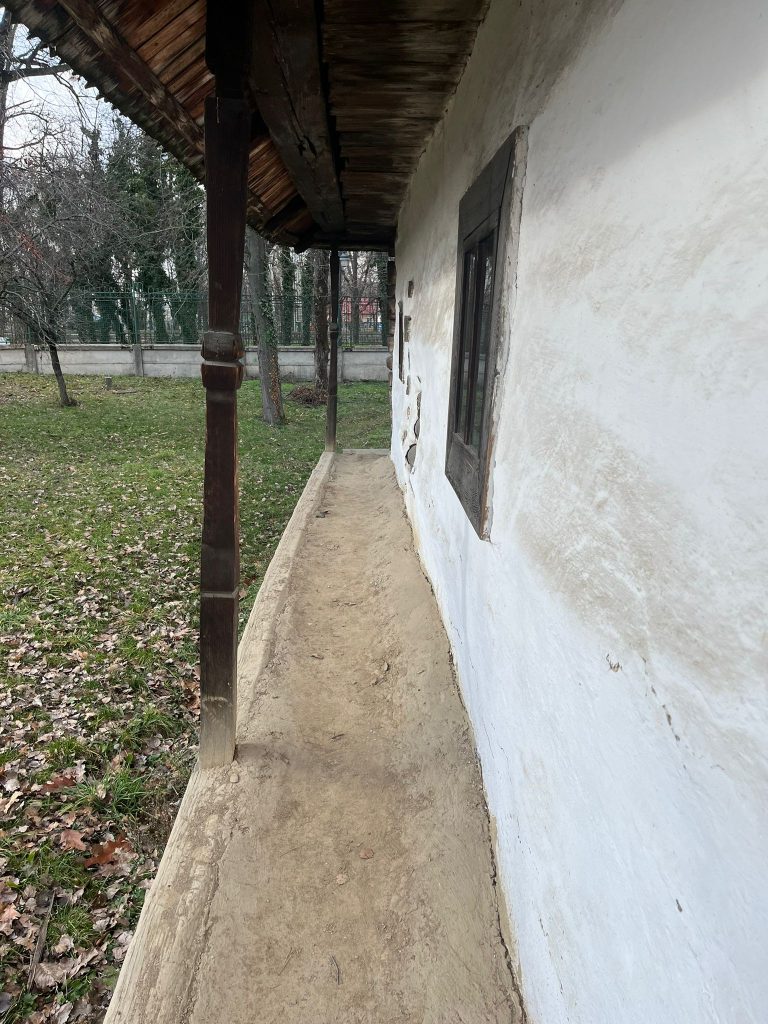
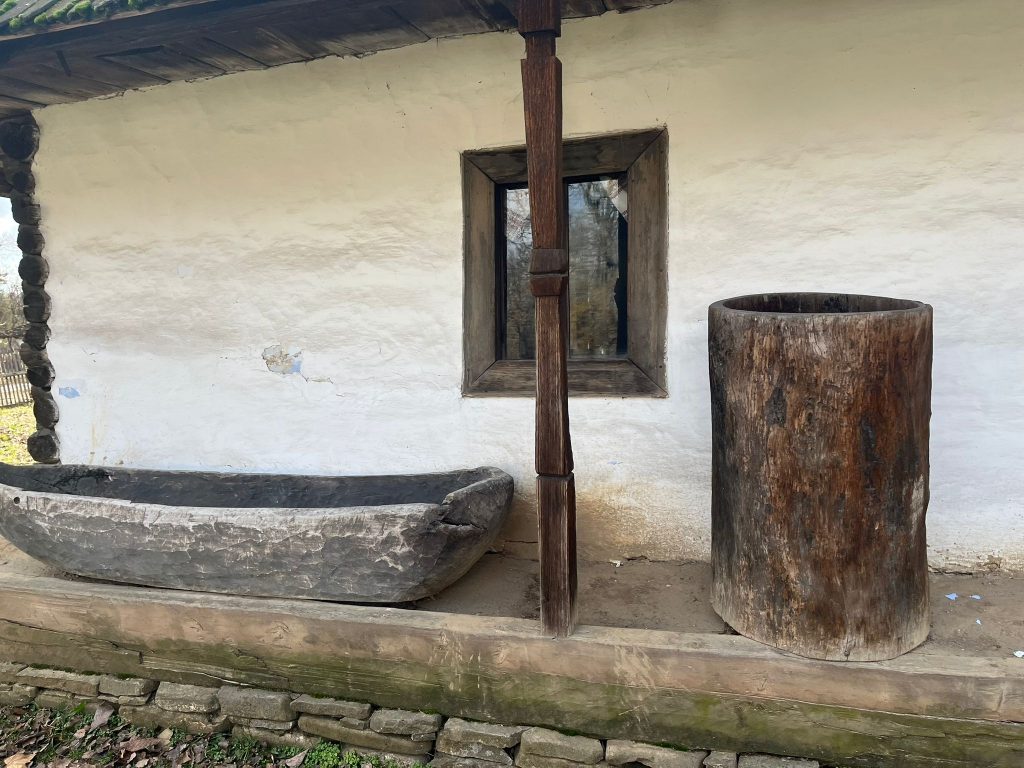
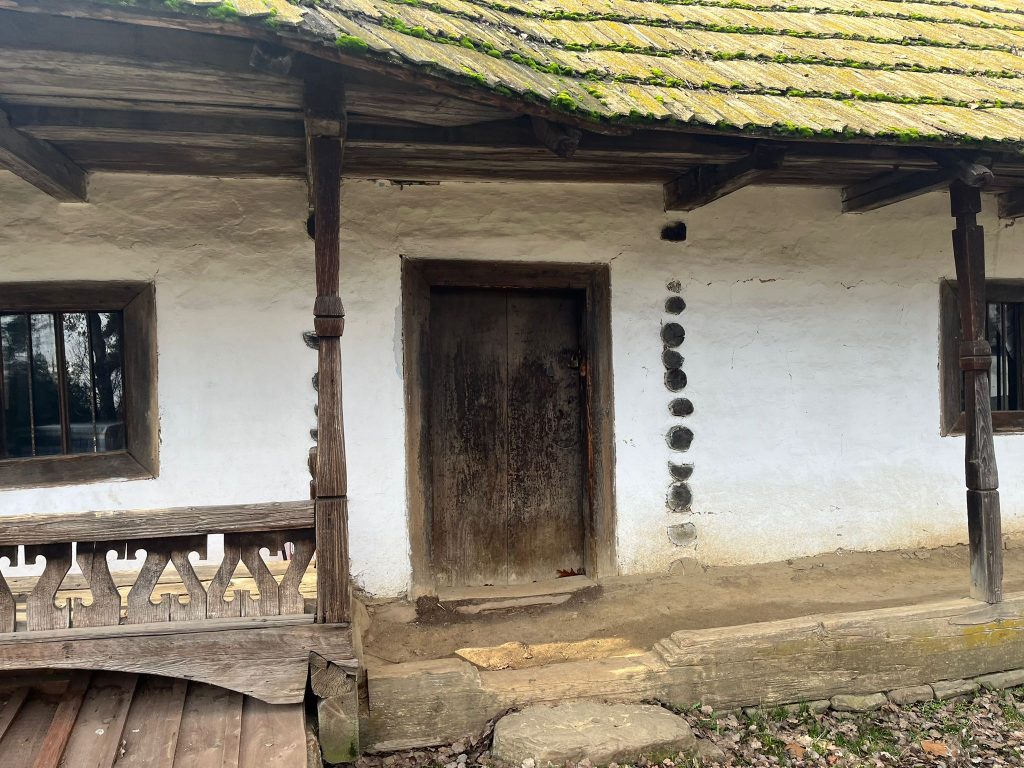
Notice that the design easily blends in with the environment and the porch serves as a transition space between the interior and the exterior, protecting the house from rain, wind and limiting the amount of light that enters, same as the small windows.
Ademas, la estrecha conexión entre el edificio y el exterior, junto con los materiales naturales de los que está construido, contribuye a la salud de los habitantes, un aspecto importante de la sostenibilidad.
Wind Conditions

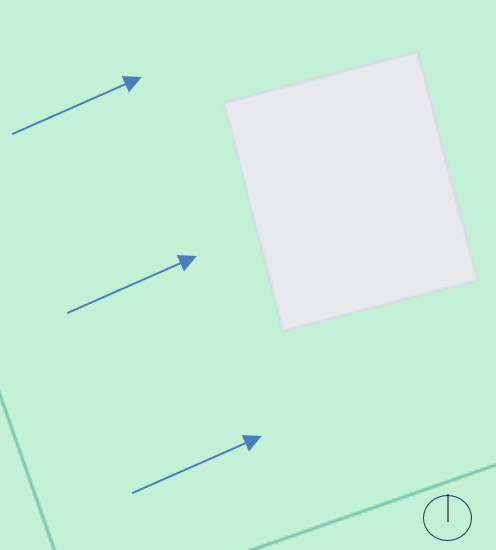
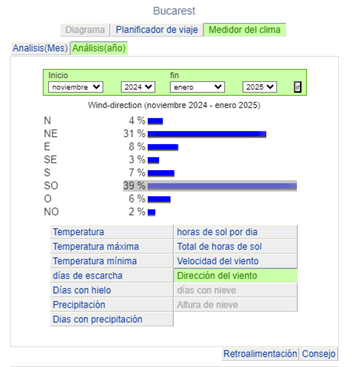
Wind direction: Predominantly W-SW Analysis NOV 2024-IAN 2025
The wind blows towards from W-SW, which means the closed facade endures static wind pressure. A risk would be the level of moisture in the case of wind-driven rain, as it can affect the plaster finishing, or even the wood underneath and cause it to decay/rot.
Solar conditions


As the Northern façade lacks openings, South-facing areas have a larger number of windows in order to capture more sunlight in winter and to facilitate passive heating. Also this placement keeps them safe from the wind.
